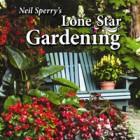Quick Tips for Bulb Success
Spring bulbs are as universally popular as ice cream. They’re cheery ways to mark the end of the dark dormant season and, if you make a few correct decisions, they’re easy as well. Here are some pertinent suggestions.
Start with the highest quality bulbs. After all, any fine final product started with the best raw materials. Ask your local independent garden center for specific suggestions for your part of the state.
Bulbs look best when they’re clustered in special spots, perhaps along a walk or near the entryway. They’re usually better when they’re viewed up-close.
Mass the bulbs together. You want to see them as an entire planting, not as individual flowers. That may mean setting tulips only 3 to 5 inches apart. Narcissus and their kin won’t be much different, depending on the type of daffodil involved. Small jonquils will be closer than large trumpet daffodils. Each bulb should be planted approximately 2 to 3 times as deep as the bulb is tall.
Know which types need to be "chilled." Texas winters aren’t very cold and some types of bulbs won’t flower properly unless they’re given 45 to 60 days of 45-degree temperatures. Tulips and Dutch hyacinths top that list. They’ll need to go into the vegetable bin of your fridge to accomplish that. The earliest you’ll want to plant them into the cooling ground will be mid-December in North Texas and late December in the rest of the state. Planting too early will reverse the benefits of the chilling. Daffodils, grape hyacinths and summer snowflakes, by comparison, can be planted directly into the ground after you buy them.
You don’t need to worry too much about fertilizing bulbs, but you will need to keep them moist during winter dry spells.
Finally, don’t be surprised if you see their leaves starting to emerge in January. Their foliage will be extremely cold-hardy. It’s only when they actually begin to form flower buds that hard freezes can do damage.

